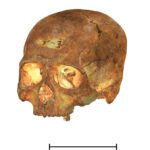An Iconic Native American Stone Tool Technology Discovered in Arabia
The recovery of distinctive fluted points from both America and Arabia provides one of the best examples of ‘independent invention’ across continents
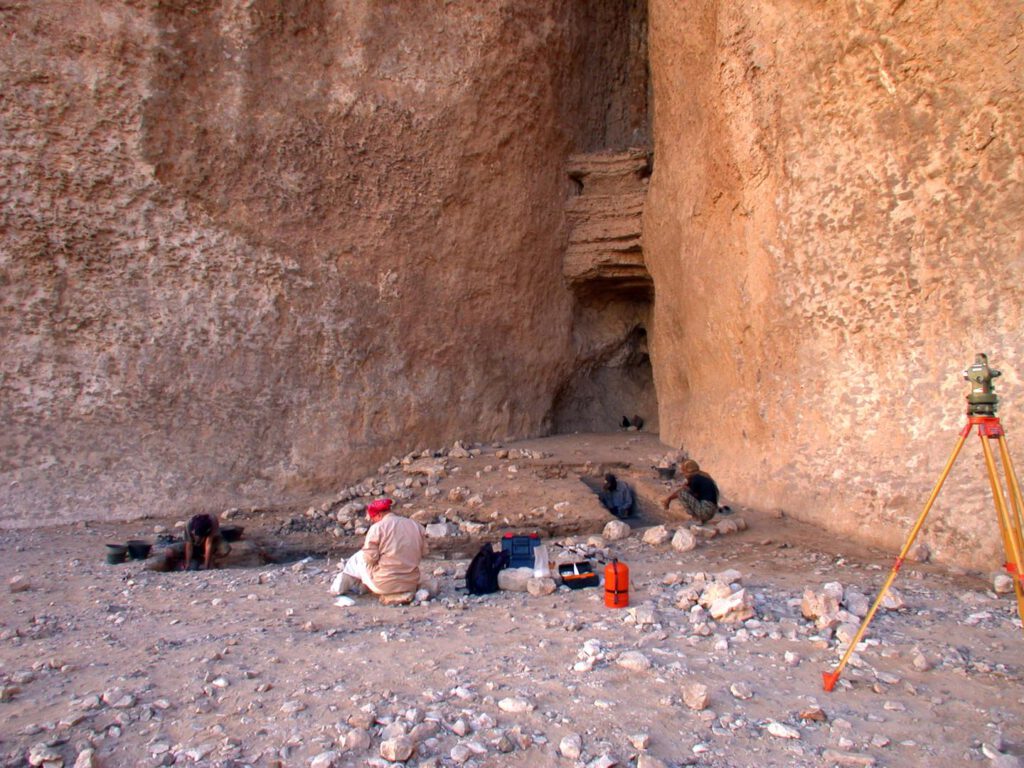
A new study led by archaeologists from the CNRS, the Inrap, the Ohio State University and the Max Planck Institute for the Science of Human History, reports on fluted points from the archaeological sites of Manayzah in Yemen and Ad-Dahariz in Oman. Fluted stone tools are a distinctive, technologically advanced form of projectile points, including spearheads and arrowheads. Fluting is a specific technique that involves the extraction of an elongated flake along the length of a projectile point, leaving a distinctive groove or depression at the base of the spearhead or arrowhead.
Fluting is a distinct technological tradition invented by early human cultures that spread across the Americas. Fluted point technology is very well known in North America, evidenced by finds across the continent dating from 13,000 to 10,000 years ago. As lead author Dr. Rémy Crassard of the CNRS notes, “Until the early 2000s, these fluted points were unknown elsewhere on the planet. When the first isolated examples of these objects were recognized in Yemen, and more recently in Oman, we recognized that there could be huge implications.”
The sites of Manayzah and Ad-Dahariz yielded dozens of fluted points. The Arabian examples date to the Neolithic period, about 8,000 to 7,000 years ago, at least two thousand years later than the American examples. As Professor Petraglia of the Max Planck explains, “Given their age and the fact that the fluted points from America and Arabia are separated by thousands of kilometers, there is no possible cultural connection between them. This is then a clear and excellent example of cultural convergence, or independent invention in human history.”
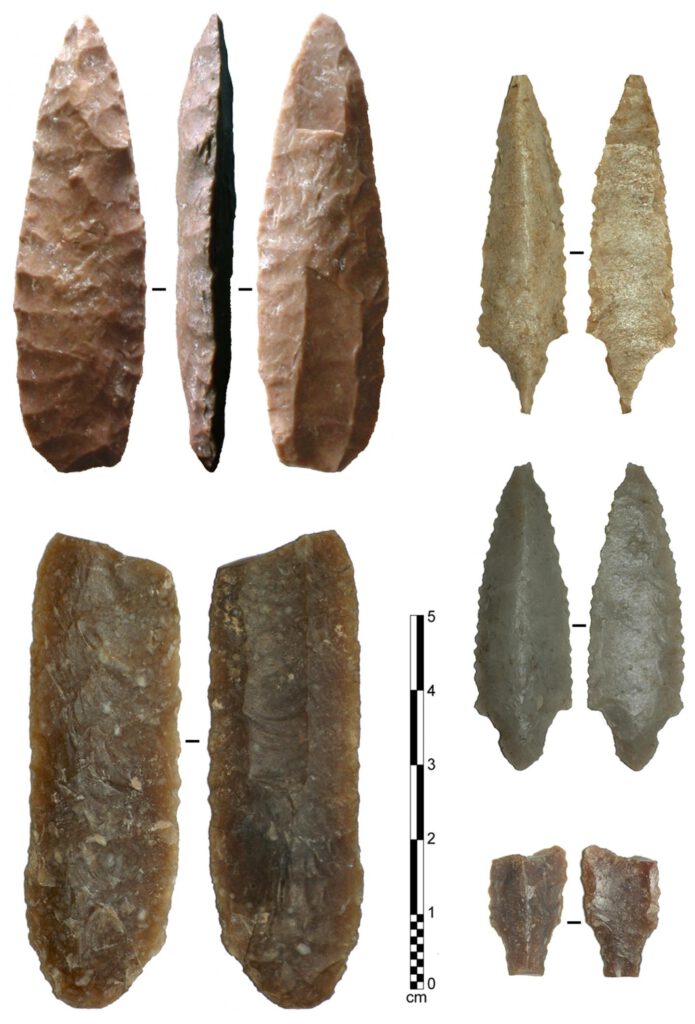
The new PLOS ONE article carefully examines the fluted points found in south Arabia. Detailed technological analysis, backed up by stone tool experiments and replication by an expert modern flintknapper, illustrate the similarities between the American and Arabian fluting procedures.
In addition to the similarities, the authors of the new study also investigated the contrasts between the technologies of the two regions. Technological differences were apparent in the nature and location of the flute. The authors emphasize that the ‘fluting method’ was likely a mental conceptualization of stone tool manufacture, more than just a technical way to produce a projectile and hafting zone. Whereas the apparent function of fluting in the Americas is to facilitate hafting, or attaching the point to a shaft, most of the Arabian fluted points do not have hafting as a functional final aim. The fluting concept and the method itself are the same in both American and Arabia, yet the final aim of fluting appears to be different.
Arabian and American fluted point technologies were highly specialized stone tool production methods. The PLOS ONE study of Arabian fluting technology demonstrates that similar innovations and inventions were developed under different circumstances and that such highly-skilled and convergent production methods can have different anthropological implications. As discussed in the article, Professor McCorriston argues that “fluting in Arabia was used as a display of skill, rather than serving a purely functional purpose such as hafting, as is more widely accepted in the Americas.”
In Arabian prehistory, southern Arabia experienced developments of local origin, with multiple examples of inventions and innovations not culturally transmitted by outside traditions. The fluting method is then a hallmark of this indigenous development in the south Arabian Neolithic.
Publication
Rémy Crassard, Vincent Charpentier, Joy McCorriston, Jérémie Vosges, Sofiane Bouzid, Michael Petraglia: Fluted-point technology in Neolithic Arabia: An independent invention far from the Americas, PLOS ONE
Press release from the Max Planck Institute for the Science of Human History
In ancient Arabia, some tools were created to show off skills
Fluted projectile points were used like a “peacock’s feathers”
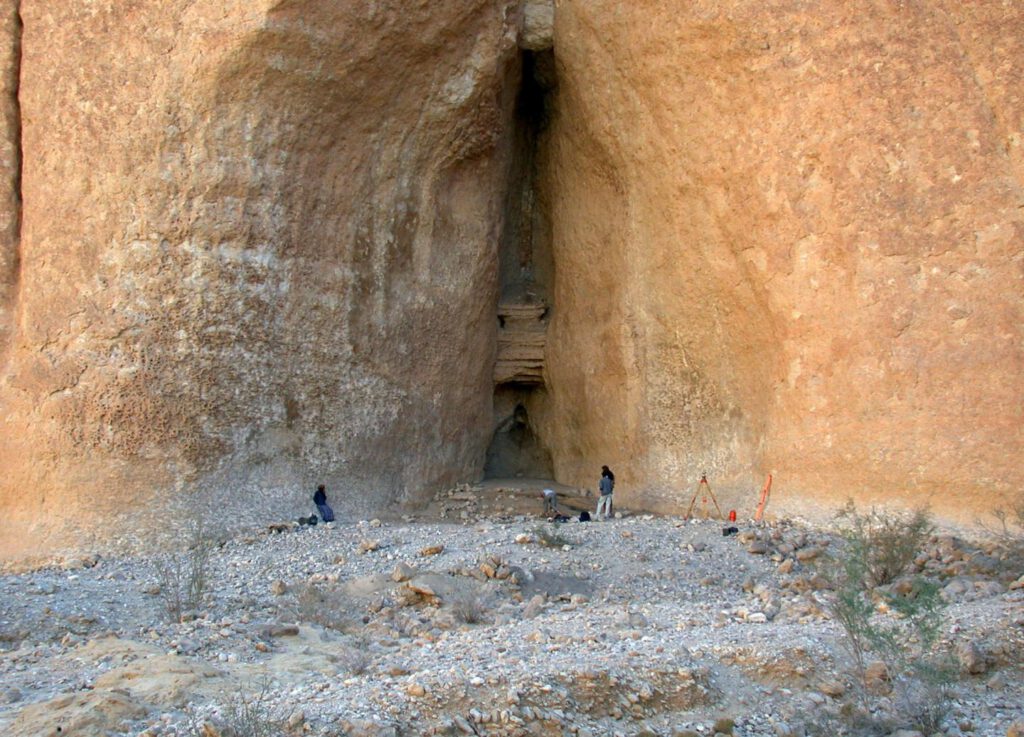
People living in southern Arabia some 8,000 years ago created intricate stone weapons that were not just useful, but designed to “show off” their tool-making skills, a new study suggests.
Researchers from the French National Centre for Scientific Research (CNRS), The Ohio State University and the Max Planck Institute for the Science of Human History excavated and examined projectile points – such as spearheads and arrowheads – created during the Neolithic period in what is now Yemen and Oman.
They found that the Arabians independently invented a process to create projectile points – called fluting – that was first used by people living in North America thousands of years earlier.
But there was one key difference between fluting as it was used in North America and the way it was used in Arabia, said Joy McCorriston, co-author of the study and professor of anthropology at Ohio State.
In North America, fluting was used just to make the arrowhead or spearhead more functional. But in Arabia, people also used it to demonstrate their technical skills.
“It was like a peacock’s feathers – it was all for appearance. They used fluting to show just how skilled they were at using this very difficult technology, with its heightened risk of failure,” McCorriston said.
The study was published today (Aug. 5, 2020) in the journal PLOS ONE.
The scientists studied projectile points from two archaeological sites: Manayzah, in Yemen, and Ad-Dahariz, in Oman. McCorriston and a team from Ohio State oversaw the excavation in Manayzah, which lasted from 2004 to 2008.
Finding fluted points outside of North America was an important discovery, said Rémy Crassard of CNRS, lead author of the study.
“These fluted points were, until recently, unknown elsewhere on the planet. This was until the early 2000s, when the first isolated examples of these objects were recognized in Yemen, and more recently in Oman,” Crassard said.
Fluting involves a highly skilled process of chipping off flakes from a stone to create a distinctive channel. It is difficult and takes much practice to perfect, McCorriston said.
In North America, almost all fluting on projectile points was done near the base, so that the implement could be attached with string to the arrow or spear shaft. In other words, it had a practical application, she said.
But in this study, the researchers found some Arabian points with fluting that appeared to have no useful purpose, such as near the tip.
As part of the study, the researchers had a master technician in flintknapping – the shaping of stones – attempt to create projectile points in a way similar to how researchers believe the ancient Arabians did.
“He made hundreds of attempts to learn how to do this. It is difficult and a flintknapper breaks a lot of these points trying to learn how to do it right,” McCorriston said.
The question, then, is why would these Neolithic people do this when it was so costly and time-consuming and didn’t make the points more useful? In addition, they only used fluting on some points.
“Of course, we can’t say for sure, but we think this was a way for skilled toolmakers to signal something to others, perhaps that one is a good hunter, a quick study, or dexterous with one’s hands,” she said.
“It showed one was good at what one did. This could improve one’s social standing in the community.”
The findings suggested that while there were many similarities between the American and Arabian fluted points, there were also differences. The way that people performed the fluting in the two places was different, which is not surprising since they were separated by thousands of miles and thousands of years, McCorriston said.
Finding the fluted points in Arabia provides one of the best examples of “independent invention” across continents, said co-author Michael Petraglia of the Max Planck Institute.
“Given their age, and the fact that the fluted points from America and Arabia are separated by thousands of kilometers, there is no possible cultural connection between them,” Petraglia said.
“This is a clear and excellent example of cultural convergence, or independent invention, in human history.”
This study is part of the larger Roots of Agriculture in Southern Arabia (RASA) project, co-led by McCorriston. The project, which included 12 years of field work in Yemen, explored the first use of domesticated animals in Arabia and the societies that developed around them.
Their work is featured in a new book co-edited by McCorriston, Landscape History of Hadramawt: The Roots of Agriculture in Southern Arabia (RASA Project 1998-2008). The book won The Jo Anne Stolaroff Cotsen Prize, which honors outstanding studies in archaeology.
Press release from the Ohio State University
Native American stone tool technology found in Arabia
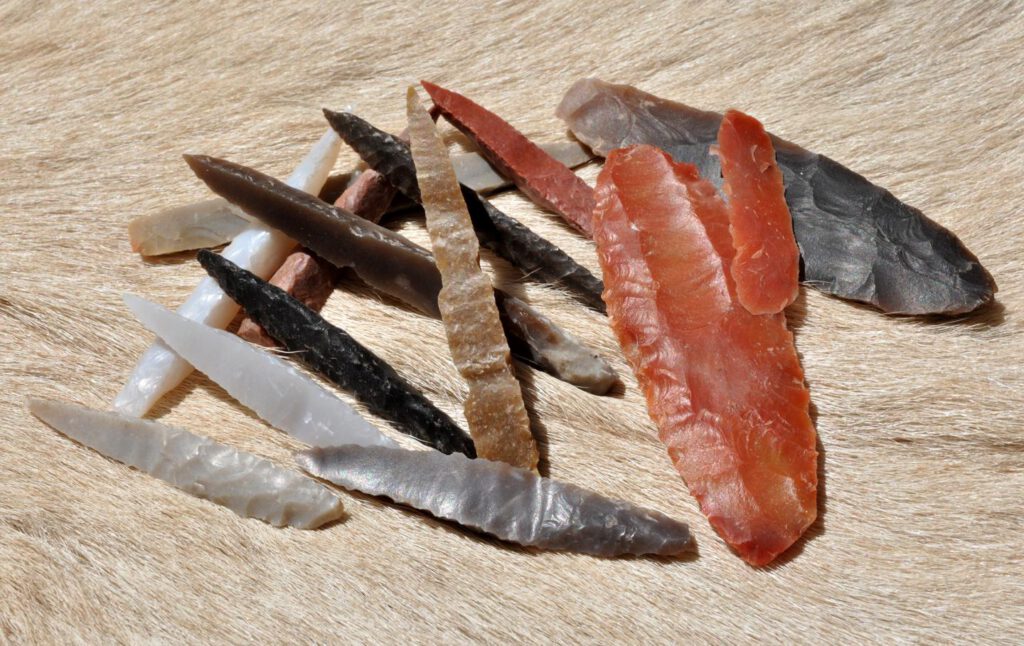
Stone fluted points dating back some 8,000 to 7,000 years ago, were discovered on archaeological sites in Manayzah, Yemen and Ad-Dahariz, Oman. Spearheads and arrowheads were found among these distinctive and technologically advanced projectile points. Until now, the prehistoric technique of fluting had been uncovered only on 13,000 to 10,000-year-old Native American sites. According to a study led by an international team of archaeologists from the CNRS(1), Inrap, Ohio State University and the Max Planck Institute for the Science of Human History, the difference in age and geographic location implies there is no connection between the populations who made them. This is therefore an example of cultural convergence for an invention which required highly-skilled expertise. And yet, despite similar fluting techniques, the final aim appears to be different. Whereas in the Americas the points were used to facilitate hafting, or attaching the point to a shaft, fluting in Arabia was possibly a mere display of knapping skills.
Notes
(1) Researchers based in France are affiliated with the Centre français de recherche de la péninsule arabique (CNRS / Ministry for Europe and Foreign Affairs; formerly CEFAS), the laboratoire Archéorient de la Maison de l’Orient et de la Méditerranée (CNRS / Université Lumière Lyon 2 / AMU / ENS Lyon / Université Claude Bernard Lyon 1 / Université Jean Moulin / Université Jean Monnet) and the laboratoire Archéologies et sciences de l’antiquité (CNRS / Université Panthéon-Sorbonne / Université Paris Nanterre / Ministère de la culture).
Press release from CNRS

